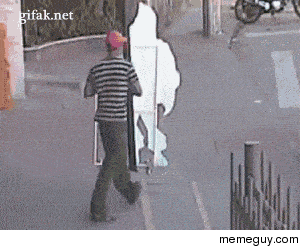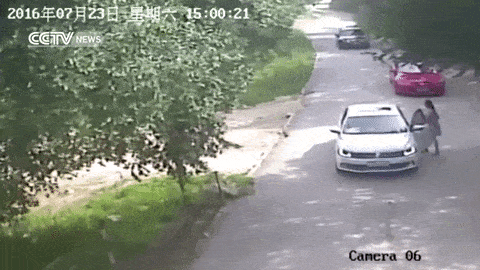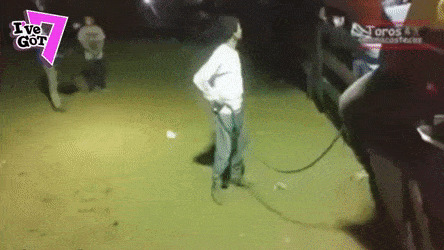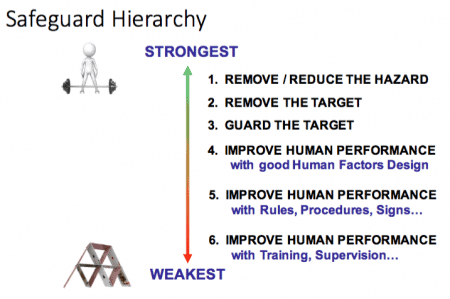Is Lack of Situational Awareness a Root Cause?

Is a lack of situational awareness a root cause? The short answer is no.
However, I am sure you want some evidence. Let us look at what situational awareness is and how it can help us understand human performance difficulties.
What is Situational Awareness?
There are several ways to define Situational Awareness.
One definition put forth in 1990 by Dr. Companion is:
“The ability to extract, integrate, assess, and actor upon task-relevant information.“
“Situational awareness is the ability of a person to perceive and
comprehend your environment and project what will
happen based on the information you have available.“

In its essence, situational awareness is knowing what is going on around us and being able to predict what will happen next.
To be situationally aware, a person must perceive that there is a hazard/danger, comprehend how that danger poses a threat to them and project how best to navigate that danger to stay out of harm.
So, if a person is unable to perceive, comprehend, or project what will happen with a hazard, then we could say they had a lack of situational awareness.

Define a “Root Cause”
Before we can say if a lack of situational awareness is a root cause, we must first define a root cause. Our definition is:
The absence of a best practice or the failure to apply
knowledge that would have prevented a problem.
But we went beyond this simple definition. We created a tool called the Root Cause Tree® to help investigators go beyond their current knowledge to discover human factors best practices/knowledge to improve human performance and stop/reduce human errors.

What Does a Lack of Situational Awareness Tell You About Human Performance?
In its simplest form, situational awareness is connected to a person’s ability to maintain attention, focus, and awareness when performing a task.
Research on air traffic controllers found that:
- 78% of problems “caused” by a lack of situational awareness were the result of a person not perceiving needed information
- 17% were due to failure to understand the information they received
- 5% due to failure to accurately project what would happen next with the information they received.
It is clear from this research that situational awareness needs further subdivisions to understand causation. Lack of situational awareness fails to answer what missing best practices or knowledge would have prevented the issue, only informing you that there was missing knowledge or information.

How Can You Address a Lack of Situational Awareness?
Situational Awareness clearly isn’t a root cause, but it clearly indicates that you have a human performance difficulty. Taking the Air Traffic Controller example, we need to understand what missing best practices would have allowed the controllers to perceive needed information, understand that information, and act accordingly to achieve a safe and successful outcome. In TapRooT®, we focus on these human performance difficulties in several ways.
1st – It is critical to improving the human-machine interface by guaranteeing that pertinent information is readily available and presented in a way that makes sense for the worker
2nd – Systems should be built in a way that they can detect errors and recover from them, allowing a person time to receive, process, and react to that information
3rd – Our system should be intuitive enough that response to errors should be an automatic or rules-based response. If a knowledge-based decision is required. Then the systems should be built to allow for time to process and proceed, and you should utilize role-play/simulation-based training to prepare a person to project what will happen in a high-pressure scenario.
Common Solutions to Situational Awareness
The most common solutions to improve situational awareness are focused on how to increase the perceptions of threats/hazards. This leads to a lot of things like increased labeling, signs, or signaling. The theory is if we can make the information harder to miss, then we will decrease human error.
Providing people with more information is a good practice, but it can also give a person too many inputs. Being overwhelmed with information will create more situational awareness issues.
Thus, you often see training campaigns that accompany situational awareness training that ultimately sounds like:
“Be more careful.”
The more robust method for addressing the other two elements of comprehension and projections is through training.
Through practice and simulations training, a person can learn the correct actions to take in a safe environment and learn how to predict a system better. However, training is limited as to what it can simulate, and its effectiveness degrades over time.
How effective will the fixes above be? Let’s examine where the most common solutions to a lack of situational awareness fall on the hierarchy of safeguards.

The Safeguard Hierarchy diagram shows that the strongest corrective action is to remove the hazard.
- If we cannot do that, maybe we can reduce the hazard (chemical substitution, for example).
- If we can’t reduce the hazard, can we move the target away from the hazard (moving a desk in the warehouse away from forklift traffic, for example)?
- We keep moving down the safeguard hierarchy from strongest to weakest.
You can see that most situational awareness solutions fall on the weakest end of the safeguard hierarchy.
Thus, if you are only implementing weak safeguards to address a lack of situational awareness, you are weakly reducing the likelihood of repeat error. It is not wrong to focus on improving people’s situational awareness, but people are not reliable safeguards.
Relying on people to maintain a constant state of attention/awareness is not the most effective way to prevent errors. For that reason, situational awareness is not a root cause, but it is a good way to identify where you should focus your investigation.
If you want to understand more about how to stop human error you have two great options.
Learn More About TapRooT® Root Cause Analysis
If you would like to learn to use TapRooT® and the Root Cause Tree® to find the real root causes of human error and to improve human performance, attend our 5-Day TapRooT® Advanced Root Cause Analysis Team Leader Course and bring an incident that you are familiar with to the course to use as a final exercise.
Learn More About Stopping Human Errors
There is a new course that will help you stop human errors:
The next course is coming up on June 14-15 in Knoxville, TN.
Why should you attend the course? Ask these questions:
- Do you want to achieve excellent human performance?
- Would you like to understand the methods you can apply to effectively stop major accidents and incidents by “stopping” human error?
- Do you need to understand what are the most effective human performance improvement techniques and which ones are counterproductive (yes, some techniques really don’t work)?
- Do you want to choose the techniques that will work best for your facility?
If any of the above questions received a “Yes!” for an answer, you should attend this course.




Definitely it is not root cause, however organization should look at what has caused that person involved in incident lacking of situational awareness. Either the person did not have sufficient experience , either person did not have proper training , or design of work site/equipment caused this shortcoming to emerge or he was fatigued, or stressed or other Performance Shaping Factors caused the person unable to predict the situations around himself and act accordingly.
Totally agree, human is not reliable safeguard, other things should be performed to make this safeguard more reliable .
The article “Is Lack of Situational Awareness a Root Cause”? is well done. The answer is Possibly.
I am a Retired EHS Professional (CSP-Ret.) of over 40 years and one of the most overlooked tools in a Safety Professional’s Tool Kit is proper Root Cause Analysis (e.g. Tap Root). And indeed the Lack of Situational Awareness is often a contributing factor to Root Cause, however often not the Root Cause. If we look strictly at the “Human Factor”, I believe we must also consider Human States and Errors. As a advocate and trainer of the “Safe Start” process, the States of Rushing, Frustration, Fatigue & Complacency along with the Errors of Eyes Not on Task, Mind Not on Task, Line of Fire, & Balance, Traction and Grip must be considered.
The ultimate goal of a Safety & Health system is to continually improve performance and to minimize Risk to Business, the Environment and of course people.
Proper Root Cause Analysis coupled with Situational Awareness are an important part of a Safety Management System.
Great article – situational awareness, as a cause, reason, etc., for an incident is useless. The term gets bantered about so much as a “root cause” because it sounds “scientific”. As Ken Reed mentioned on LinkedIn, it is a lazy person’s root cause. Now that I have thrown rocks at this, I had better offer some info that might help right? In my dissection of incidents, it seems that many workers struggled with risk tolerance and hazard respect. By hazard respect I mean they know the hazard exists, but chose to ignore or disregard it. We see much of this in the oil/gas exploration – production sector. Risk tolerance is another animal – how much risk is your company willing to take, or allow workers to take? Skewed risk perception, based on a number of factors to lengthy for this message, is very prevalent. My company’s Safety Leadership Program/Course has a robust section on Risk Tolerance/Risk Perception to try and help our safety leaders understand the issues and work towards solutions out in the field where the work is at.